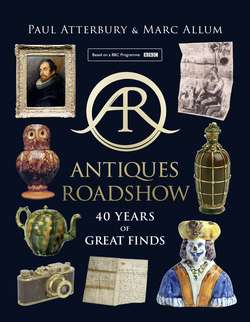Читать книгу Antiques Roadshow: 40 Years of Great Finds - Paul Atterbury, Paul Atterbury - Страница 19
A STEIFF TITANIC BEAR
Оглавление‘I got such a shock. I just couldn’t believe it. I just rocked backwards and forwards. It’s better than the stock market.’
This was the reaction of a Melbourne lady who had just heard that her teddy bear was worth $200,000. In 2005, the Roadshow visited Australia, with two locations, Sydney and Melbourne. The first programme was filmed at Sydney University, the second in Melbourne’s great exhibition building, a remarkable legacy of the International Exhibition of 1880, and the oldest building of its kind in the world still in regular use as an exhibition centre. Both shows had a ticketed attendance of 2,000, and both days produced some extraordinary and unexpected items, many of which were only indirectly connected to Australia’s history. Among the most exciting was this black teddy bear. The catastrophic loss of the RMS Titanic on 15 April 1912 was commemorated in many ways, but one of the more unusual was the decision by the German toy maker, Steiff, to produce a black, grieving teddy bear as a memorial to those who had lost their lives, especially children. A small number were made, perhaps around 600 in different sizes, and the bears were distinguished by their black mohair fur and red-rimmed eyes, the latter to underline the grief affecting people around the world after the loss of the ship. It might have been more logical for Steiff to have produced a white polar bear toy, but it was believed at the time that a black, grieving bear would have greater appeal, and be more directly sympathetic to the disaster and its global impact.
TEDDY BEAR FEVER
Steiff, a Stuttgart company set up by Margarete Steiff, in 1880, was well known internationally as the maker of the world’s first jointed plush bears, invented by Margarete’s nephew Richard in 1902 and introduced at the Leipzig Toy Fair in 1903. Hitherto, most animal models and toys had been presented on four legs, but Richard’s breakthrough was to design a bear that stood up on its hind legs. In 1907, Steiff sold over 970,000 bears and teddy bear fever had gripped the world. By 1912 the teddy bear, named after the US President Theodore (Teddy) Roosevelt, had become one of the world’s most popular toys, with manufacturers in many countries following Steiff’s lead. However, Steiff had carefully developed and maintained its reputation as the maker of the best bears, underlined by the famous metal button label to be found on the bear’s ear, which had been introduced in 1904.
Early Steiff bears can be valuable, with the best examples fetching £100,000 or more, but everything is dependent upon the condition. Most bears have, understandably, been much played with, often by more than one generation of children in a family, and so very few have survived in anything that might resemble their original, mint condition. It is not known how many Titanic bears were sold or how the public, and children, responded to a toy with so sad a story. It seems likely that the few survivors in good condition may have spent much of their lives at the back of cupboards or the bottom of trunks, forgotten from one generation to the next.
The Titanic bear shown at Melbourne was the first to be seen on the Roadshow. Others had appeared on the market – in 1990 a bear in excellent condition had sold at Christie’s in London for £91,000. This gave expert Hilary Kay a benchmark figure for the Melbourne bear, which was brought in by a teddy bear and doll enthusiast who had first seen the bear some years before when she sent one of her bears to a restorer. When the work had been done, the restorer had sent her a photograph of her bear seated beside a black Titanic bear, something she had heard about but never seen. A year later, the restorer had called her to ask if she was interested in buying the black bear. Realising that she would probably never get another chance, and that it might be the only one in Australia, she agreed to buy it for $40,000. So, when she came to the Roadshow, she really wanted to find out whether she had paid the right price, and hoped that it might now be worth $60,000.
When the owner had recovered from her shock at hearing the $200,000 valuation, Hilary asked her if the bear had a name.
‘Oh no,’ she replied, ‘I hadn’t called him anything, he just sat on top of the cupboard.’
In 2012, to mark the centenary of the disaster, Steiff reissued the Titanic bear in a limited edition.
